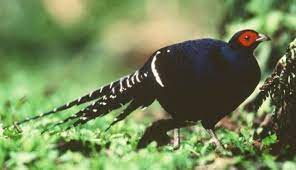
|
|
About Ketupa FlavipesDistributed at an altitude of 0 to 1,000 meters, the habitat is mainly between streams in broad-leaved forests. Sheipa National Park, Taroko National Park, and Yushan National Park are all distribution areas of the Yellow Fish Owl.
Ketupa Flavipes is more commonly known as Tawny fish owl. They are most active at night and are the top consumers in the chain of river ecosystems. Often, when there is still a redundant amount of the, their existence will often be used to measure whether the entire river ecosystem is healthy and functioning. Besides, they are also one of the largest kinds of owls in Taiwan. Unfortunately, their existence also falls under one of the victims of human activity. It started around 2016 when Taiwan largely used pesticide or rat poison to kill rats in Taiwan’s grasslands of the southern hills, where Tawny fish owls inhabited. What’s worse? They happen to take mice as their primary choice for food on a daily basis. A Kaohsiung Wild Bird Society Organization discovered that mouse poison is detected out of the many killed owl and are examined to be the cause of their death. Further, the higher use rate on bird web also took the tragedy even further, leading Tawny fish owls to eventually be determined as endangered animals. There isn’t a very particular organization targeting the rescue of Tawny Fish Owl, yet tons of individual cases, including one of the most famous ones in the Tuanshan Township in Yilan where a man found a Tawny Fish Owl was dying from both starvation and the severe injuries. After medical treatment and rapid screening by the County Agricultural Department, avian influenza was initially ruled out. This case, like many others, has reminded us that individual power matters just as much as a group and that it is never too late to take actions to help “rebirth” a population. |

The Yushan National Park Management Office found that the imperial pheasant likes to inhabit needle and broad-leaved mixed forests and the bottom of coniferous forests at medium and high altitudes from 1,800 to 3,800 meters. It is active in areas with steep slopes (between 30 and 60 degrees), and is also found in secondary forests and artificial forests.
The Mikado Pheasant, native to Taiwan, displays striking sexual dimorphism, the differences in appearance between males and females of the same species. Males feature an elegant slaty-blue plumage with white markings and vibrant red facial skin, while females exhibit brown coloring with pale feather edges. These pheasants are typically reticent, foraging quietly in montane forests' undergrowth but occasionally venturing into open areas when food is abundant. They are usually spotted alone, in pairs, or in small family groups led by the female. During the breeding season, males engage in dramatic displays, drumming with their wings and emitting shrill whistling calls.

Mikado Pheasants inhabit Taiwan's central mountains, primarily in dense undergrowth and bamboo forests on steep slopes at altitudes between 1,800 and 3,300 meters. Their diet includes fern shoots, berries, flower buds, and insects. They skillfully construct nests using bamboo stalks and dry leaves, placing them in tree trunks, fallen branches, or on the ground. Clutch sizes range from 5 to 10 eggs, with an incubation period of about 28 days. These pheasants emerge during light or misty rain and tolerate human presence, facilitating close observation, especially in areas accustomed to human feeding.
Mikado Pheasants are cautious when disturbed, gliding rather than flying short distances. Males establish territories, produce clucking and “ke, ke, ke” calls, and perform wing-whirring displays during disputes or the breeding season. Their behavior, reminiscent of chickens, includes ground foraging, particularly on rainy days. The breeding season spans March to June, with females incubating eggs and nurturing fledglings that achieve independence within six months.

Taiwan's national bird, the Mikado Pheasant, is depicted on the $1,000 TWD dollar. However, they were listed as endangered by the IUCN in 1966 due to issues like poaching and habitat destruction worldwide and included in category 1 of the prohibited trading list by the Convention on International Trade in Endangered Species (CITES). Particularly within Yushan National Park, their habitats receive comprehensive protection due to the park's establishment. Currently, the number of Mikado Pheasants exceeds 10,000, a milestone confirmed by recent investigations conducted by Yushan National Park.
|
|
The Taiwan blue magpie is mainly distributed in areas below 1,000 meters above sea level, and it can also be found in middle and low-altitude broad-leaved forests or secondary forests below 1,800 meters. Even so, if the mountainous environment is over-developed or the forests are not rich enough, there will often be no Taiwanese blue magpie to inhabit. In recent years, the Taiwanese blue magpie has gradually adapted to the city. For example, the Taiwanese blue magpie can be found near the mountainside in Taipei City, and it has also appeared in Wenshan Kindergarten and the nearby Muzha Park. Taiwan blue magpies are endemic to the country. The head of the bird is black, and the beak is red, but most of the rest of the feathers are bright blue, and its tail has very long feathers. The ends of the rest of the feathers are white, except for the two central ones, which are lined with black feathers. Generally, blue magpies live in broad-leaved forests between 100 meters and 1,200 meters up in the mountains. Besides being noisy and fierce, it also eats a mixture of foods. It also preys on snakes, wild mice, lizards, and plant fruits in addition to large insects, small birds, and nestlings. Nests are usually built on treetops at the junction of woodlands and weedlands by Taiwanese blue magpies. There are usually four to six eggs laid at a time by these birds, who live in groups. The young of a species are fed by other birds of the same species during the birthing season. In the Red List of Threatened Species of the International Union for Conservation of Nature, BirdLife International classifies Taiwan blue magpies as not requiring conservation measures. Meanwhile, Taiwan's Ministry of Agriculture classifies blue magpies as conservation level three animals, which means other wild animals that should be protected. Capturing and breeding are considered illegal behavior. After the Taiwanese blue magpie was voted Taiwan's unofficial national bird by an online vote, it has been hunted in large numbers due to its increased popularity. Furthermore, alien species have invaded its habitat, making it difficult for them to live there. |